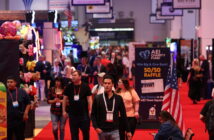Checking the Global Temperature
Part Two of Kevin Williams’ Examination of the Health & Trends
Shaping the Out-of-Home Entertainment Market

by Kevin Williams, International Immersive Technology Special Correspondent
The previous coverage of the Western amusement market (RePlay, November 2023) included several trends from Asia seen making landfall in the West. But the Asian amusement scene has not only seen innovation, but considerable upheaval in its traditional model. Already undergoing restructuring before the global Covid crisis, a changed landscape has been accelerated as a new industry emerges. As 2023 comes to a close, we are in an excellent position to evaluate the current opportunities in the Asia, Middle East and Oceana landscape.
Asia and predominately the Japanese market has seen the greatest upheaval illustrated by major changes to the Japanese amusement trade. Only recently, the leading trade news industry resource, Amusement Press, ceased publishing, its proprietor suffering a stroke soon after. The industry there has also sustained difficult conditions for its association membership and trade event. The traditional Japanese game room experience has been in upheaval following the pre- and post-Covid market, along with a change in entertainment appetites from the core demographic. These changes have brought tectonic shifts in the amusement factory landscape.
The nation’s avid amusement audience turned to technology in lockdown and we saw the emergence of “Live Play,” warehouses filled with connected, modified redemption pieces (mainly crane games called “UFOs” there), played remotely through web apps. A unique feature of this is being able to post the same day about prizes won in order to build engagement.
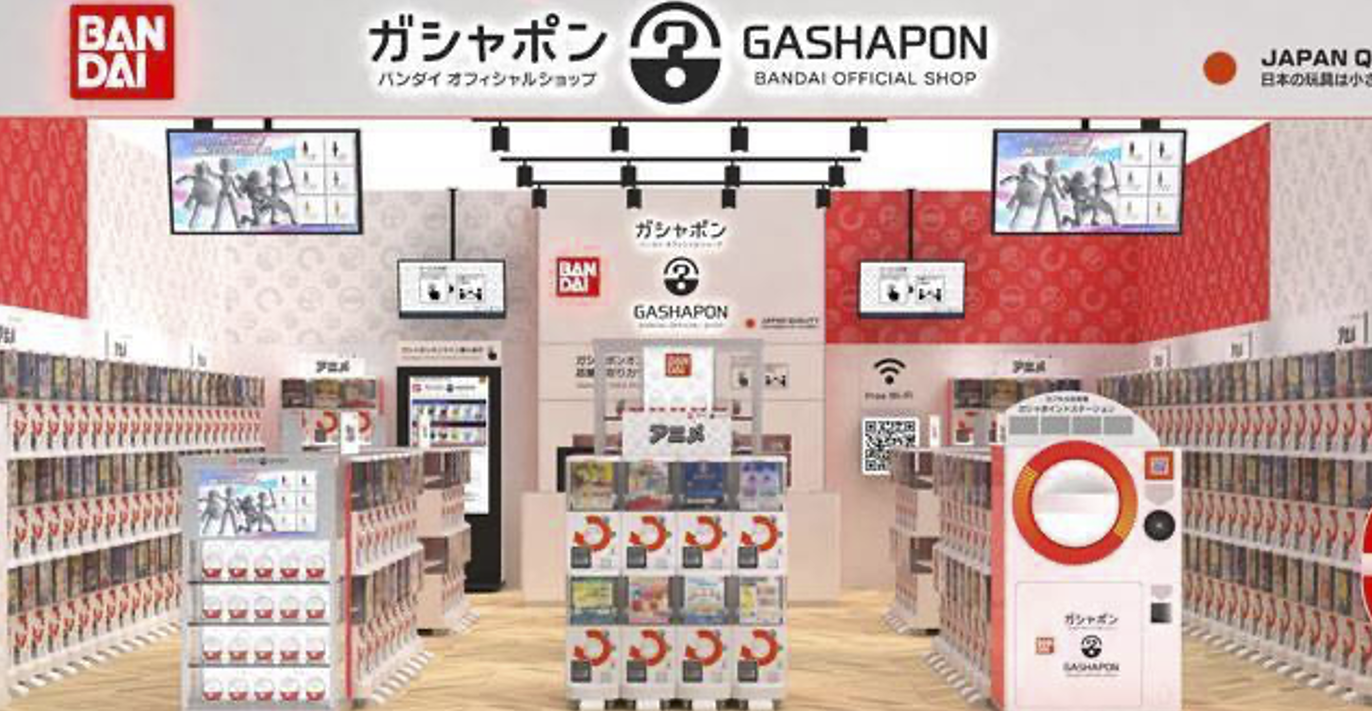
The new Gashapon landscape sees Bandai Namco expanding its chain of stores where capsule prize vending is the star.
Emerging from isolation, but still impacted by the crisis, amusement changed. An explosion in “Gasapo” vending, capsule prize machines, started filling unique stores. Once prominent amusement venue operators began pivoting to run these stores, which was seemingly a replacement of the previous Pachinko business. For example, Bandai Namco expanded its chain of Gashapon stores as the structure of the amusement venue business and manufacturing in this territory adapted to meet the new market needs.
The sale of the Japanese SEGA amusement facility business to GENDA GiGO Entertainment has seen a growth in updates and new refurbished gaming rooms from the corporation with the GIGO (“Get into the Gaming Oasis”) name replacing the previous SEGA branding.
One of the examples of the evolving Japanese landscape has been the explosion in crane machine penetration into the market. The market for these “UFO catchers” has always been strong, but the post-Covid market has seen an explosion in adoption. This is at world-record level where facilities have hundreds of machines, defined as “Giga Crane Game Stadiums.”
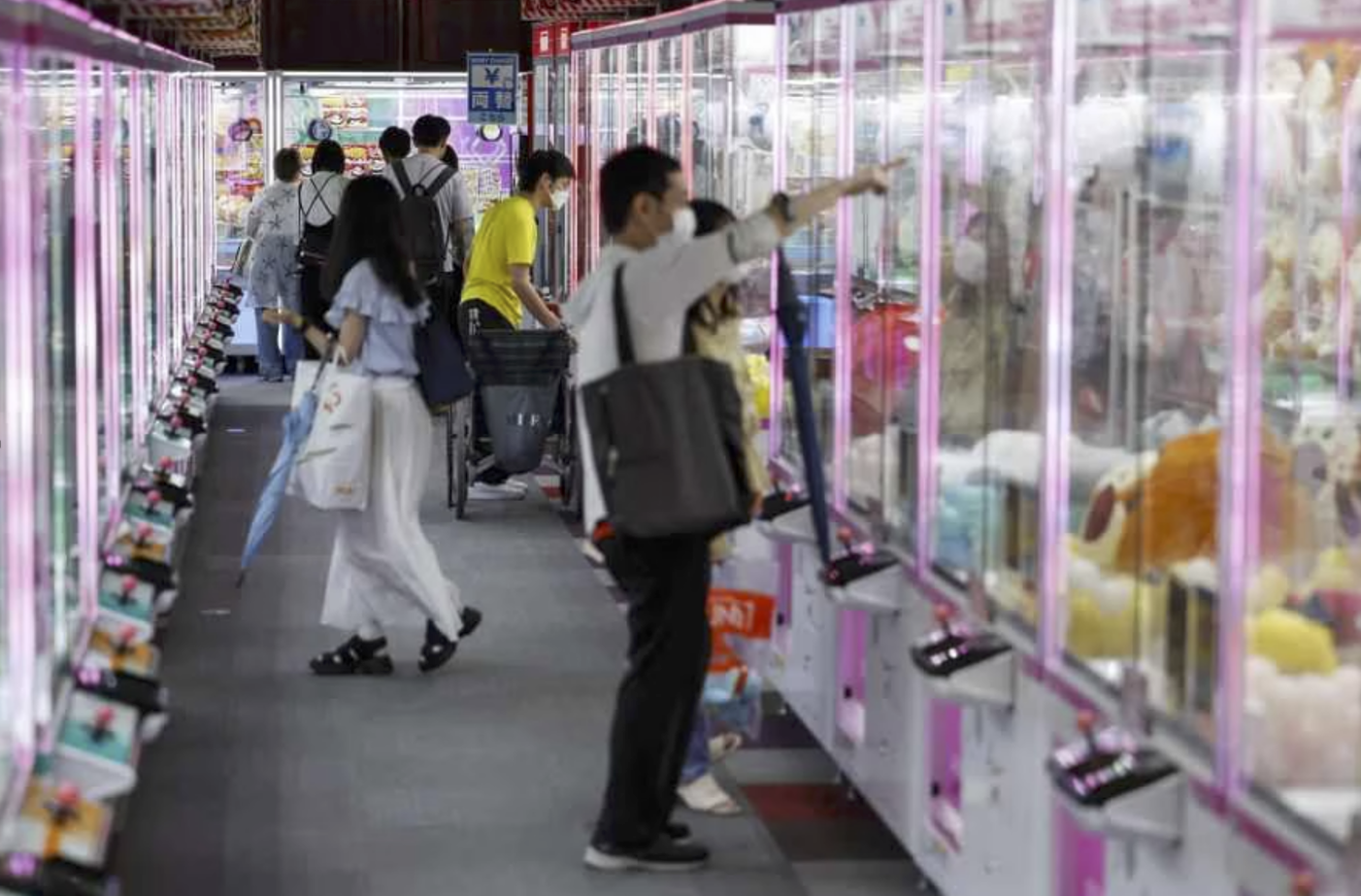
Some of the 310 cranes in the game corner at the Round One Umeda store.
The Round One chain in Japan has expanded development of this type of entertainment, causing the emergence of the idea that the Japanese market could still be a trend-setting harbinger.
“Active Entertainment” venues have started to appear in the territory, CA SEGA (the partnership between Chinese Character Animation and SEGA) announced their first Joypolis sports venue. While Bandai Namco Amusement announced its plans to focus part of their business on development and operation of a chain of sports entertainment facilities, with their VS Park and new KOBE Super Stadium brands. These digital active play venues with lots of activities, and gamified sports elements – capturing achievement and scores as the young audience plays – is a trend gaining international recognition.
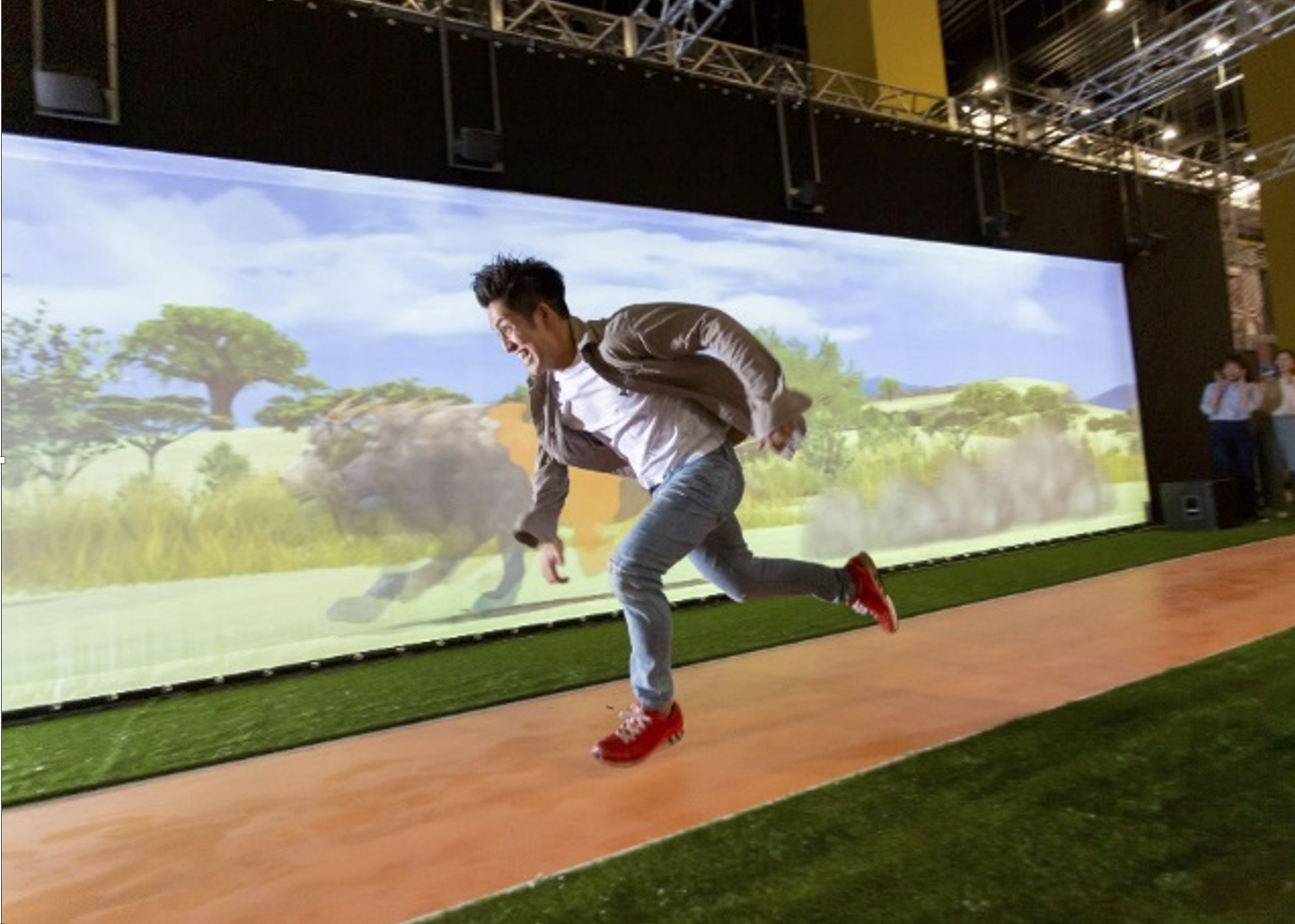
A test of speed against a digital opponent at VS Park.
A market, and people shaped by technology, it would be obvious that Asia was one of the first to fully embrace the reemergence of VR. Now some years after the main explosion of interest, VR is being treated more cautiously. Many of the early big LBE VR stores in Japan have changed or closed. Most noticeably, Bandai Namco’s grandiose VRZone flagship store closed its doors and never returned, as did the whole VRZone Portal initiative. Even CA SEGA’s Joypolis VR initiative fell by the wayside, though their flagship indoor amusement theme park still operates the popular Zero Latency free-roam VR experience.
Innovation in immersive technology has not been stifled, and VR has been joined with AR (augmented reality) technology, creating unique, highly active digital sport with “HADO.” Created by Japanese developer meleap, teams of players launch digital projectiles at each other in fast-paced competition that has grown into a fully-fledged esports tournament. International venues have popped up to support this experience, one of the few highly successful commercial AR experiences. Speaking of esports, amusement factories have championed the competitive environment, even forming their own teams to compete in streamed tournaments on their hardware.
Wholly focused for home (Japan) deployment, the Western markets now do not depend on Japanese exports as previously. The void has been filled by China, which now manufactures the lion’s share of amusement, redemption and prize machines internationally, mostly producing other companies’ products through a dedicated international operation that dominates the industry.
Already, we see emerging Chinese developers like ACE Amusement and Wahlap creating innovative products. We have seen partnerships with these Chinese manufacturers leading towards success stories, most recently, the success of LAI Games release Asphalt 9 Legends Arcade was driven by Chinese manufacture and development in partnership. Likewise, SEGA Amusement International’s Western entry into VR with Virtual Agent was developed through a Chinese collaboration.
Chinese amusement venues have gone through their own evolution. Before 2020, thousands of VR arcades littered the Chinese market. Since then, the industry has evolved with new VR 2.0. Development sees new applications of the once-prevalent 9D and VR racing machines, as more sophistication in design and application is applied, trying to exorcise the ghosts of poor manufacturing and unreliability that dogged these early VR exports.
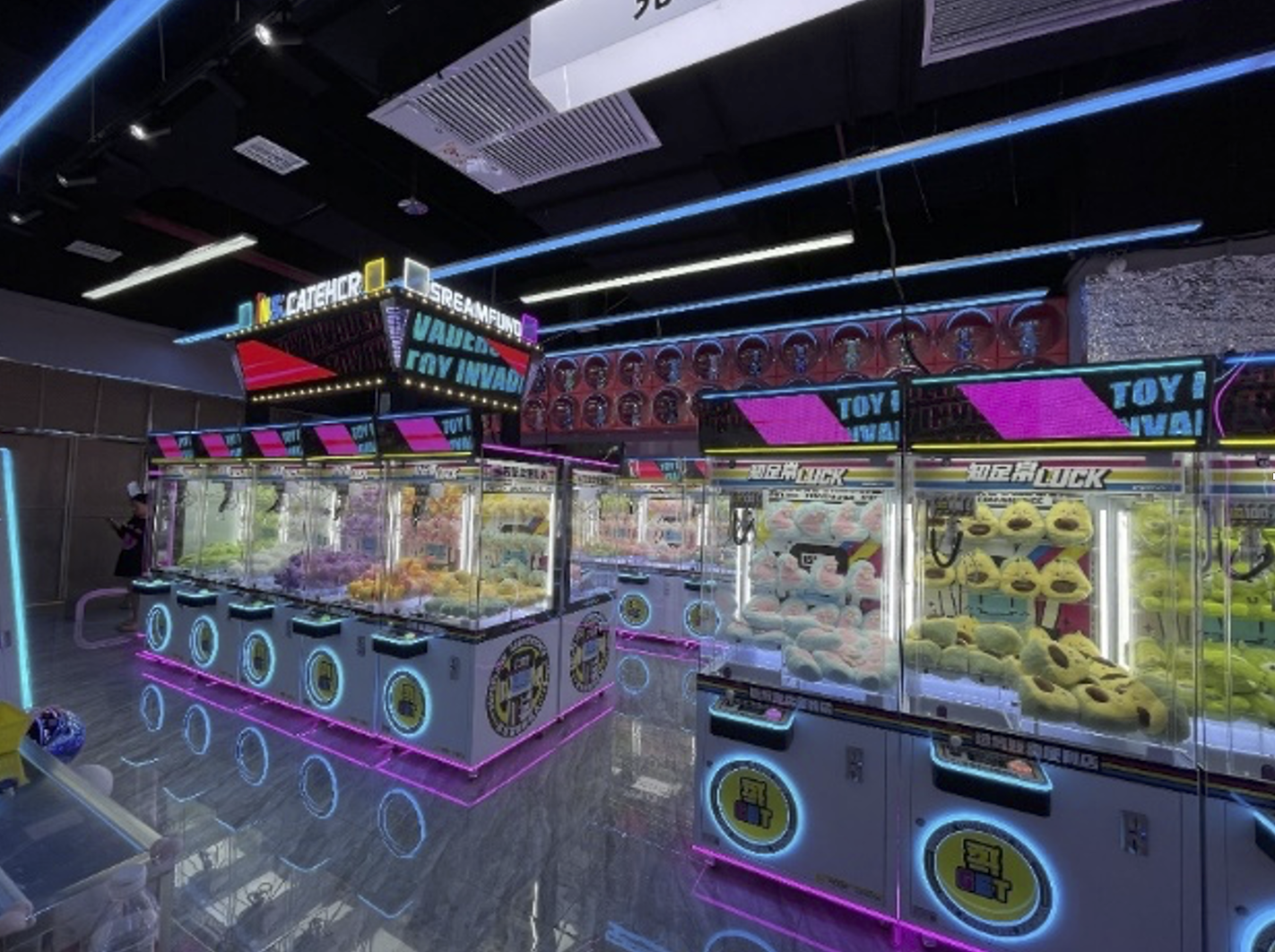
A DreamFuns catcher store.
In many cases, failed VR arcades have been replaced by a new generation of prize and redemption sites. Sporting bright colors, neon illumination and stylish machines, these “catcher stores” are becoming an eye-catching draw for a new generation of sophisticated customer. Examples like the Dreamfuns chain illustrate a new era in amusement placement within this highly active market. As seen in Japan with the UFO catcher stores, the Chinese market is focused on new looks and big presentation to draw a new audience to play and enjoy.
One final aspect of the changing landscape in amusement has been seen in emerging new territories, such as in the Middle East and Oceana. The development of new theme park, resort and entertainment venues within the UAE and KSA markets has been immense – and with that, much has been borrowed and improved from the more traditional amusement scene. In Australia, we have seen the emergence of social entertainment sites, embracing competitive socializing, like Holey Moley from Funlab. While new-generation FEC venues are defined by the likes of Timezone Arcade, a 200-location chain of venues that now looks toward emerging markets like India and Vietnam to define and grow.
In concluding this snapshot of the changing landscape in this two-part report, we have seen a massive reinventing of the amusement landscape. Those that are embracing change internationally are seeing massive success and business growth, while others that attempted to hold back the tide have been swept aside. Mergers and acquisitions seem the one constant and I believe we are entering a period of upheaval and reinventing as the old guard is replaced by a new business approach. They say, “May you live in interesting times.” We surely do!
Kevin Williams is a specialist on entertainment and technology. He is a frequent presenter at international conferences and a regular speaker at the Amusement360 bootcamp for LBE and FEC investors. He is also one of the senior judges of the VR Awards.
Kevin’s consultancy, KWP Ltd., helps international clients develop immersive and interactive entertainment. He now combines his services as co-owner and technology director of Spider Entertainment (a global leader in out-of-home entertainment for retail destinations and beyond), and holds advisory positions with other entrants into the market.
Kevin is publisher of the Stinger Report for those working or investing in the amusement, attractions, and entertainment industry. He is also the co-author of the only book on this aspect of the market (the next edition is scheduled for publication in 2023.
Kevin can be reached at [email protected].


